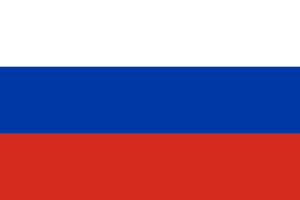Language/Russian/Grammar/Introduction-to-Pronouns
| ◀️ Prepositional Case — Previous Lesson | Next Lesson — Noun-Adjective Agreement ▶️ |
As a teacher of the Russian language for over 20 years, I have had the pleasure of introducing countless students to this fascinating language. In this lesson, we will cover an essential part of Russian grammar: pronouns. Pronouns are a crucial component of Russian language, and knowing how to use them correctly will help you become more fluent in the language.
Pronouns are used in place of a noun and are important for sentence structure and understanding. In this lesson, we will cover Russian personal, possessive, and demonstrative pronouns. We will also discuss how to make adjectives agree with nouns in gender, number, and case.
Don't miss the chance to check out these pages as you wrap up this lesson: Conditional Mood & Pronunciation Rules.
Introduction to Pronouns
Pronouns are an essential part of Russian language and are used in place of a noun to avoid repetition. They are classified into three categories: personal, possessive, and demonstrative pronouns. In Russian, pronouns change based on gender, number, and case.
Personal Pronouns
Personal pronouns in Russian refer to individuals or groups of people. In Russian grammar, there are twelve personal pronouns, as shown in the table below:
| Russian | Pronunciation | English |
|---|---|---|
| Я | ya | I |
| Ты | ty | You (singular, informal) |
| Он | on | He |
| Она | ana | She |
| Оно | ano | It |
| Мы | my | We |
| Вы | vy | You (singular or plural, formal) |
| Они | ani | They |
| Себя | sebya | Oneself |
| Нас | nas | Us |
| Тебя | tebya | You (singular, informal) |
| Вас | vas | You (singular or plural, formal) |
Note that the pronouns "Я" and "Мы" are capitalized in Russian.
Possessive Pronouns
Possessive pronouns in Russian indicate ownership or possession of something. Russian possessive pronouns agree in gender, number, and case with the noun they are modifying. For example:
- Моя книга - My book (feminine)
- Мой дом - My house (masculine)
The table below shows the singular and plural forms of possessive pronouns.
| Russian | Pronunciation | English |
|---|---|---|
| Мой | moy | My (masculine) |
| Моя | maya | My (feminine) |
| Моё | mayo | My (neuter) |
| Мои | moyi | My (plural) |
| Твой | tvoy | Your (masculine) |
| Твоя | tvaya | Your (feminine) |
| Твоё | tvoe | Your (neuter) |
| Твои | tvoyi | Your (plural) |
| Его | yego | His/Its (masculine) |
| Её | yeyo | Hers/Its (feminine) |
| Его | yego | Its (neuter) |
| Их | ih | Their (plural) |
Demonstrative Pronouns
Demonstrative pronouns in Russian are used to point out specific items or people. There are three types of demonstrative pronouns in Russian:
- Этот (This)
- Тот (That)
- Сей (This one)
Demonstrative pronouns must agree in gender, number, and case with the noun they are modifying. For example:
- Этот дом - This house (masculine)
- Эта книга - This book (feminine)
- Это окно - This window (neuter)
The table below shows the singular and plural forms of demonstrative pronouns.
| Russian | Pronunciation | English |
|---|---|---|
| Этот | etot | This (masculine) |
| Эта | eta | This (feminine) |
| Это | eto | This (neuter) |
| Эти | eti | These (plural) |
| Тот | tot | That (masculine) |
| Та | ta | That (feminine) |
| То | to | That (neuter) |
| Те | te | Those (plural) |
| Сей | sey | This one (masculine) |
| Сия | siya | This one (feminine) |
| Сие | sie | This one (neuter) |
| Сии | sii | These ones (plural) |
Noun-Adjective Agreement
In Russian grammar, adjectives must agree in gender, number, and case with the noun they are describing. For example:
- Высокая девушка - Tall girl (feminine)
- Высокий парень - Tall boy (masculine)
- Высокое окно - Tall window (neuter)
When using a possessive pronoun with an adjective, the adjective will agree in gender, number, and case with the possessed noun, not the pronoun. For example:
- Моя высокая машина - My tall car (feminine)
Verbs of Motion
Verbs of motion in Russian are divided into two categories: those that indicate movement from one place to another (ходить, ездить), and those that indicate only one-way motion (идти, ехать). They are also divided into perfective and imperfective, which correspond to completed and incompleted actions. Understanding verbs of motion is crucial for communicating travel and directions.
Conclusion
In this lesson, we have covered the basics of Russian pronouns, including personal, possessive, and demonstrative pronouns. We have also discussed how to make adjectives agree with nouns in gender, number, and case. Understanding these concepts will help you become more proficient in the Russian language.
Sources
- Russian Grammar → Russian Pronouns → Introduction to Pronouns
- Russian grammar - Wikipedia
- Learn Russian Online: Self study guide for Russian language learners
Congratulations on finishing this lesson! Explore these related pages to keep learning: Perfective Imperfective & Cyrillic Alphabet.
Other Lessons
- Gender
- Gender Recognition
- Conditional Mood
- Prepositional Case
- The verb to have
- Perfective Imperfective
- How to Use be
- Imperative give an order
- Present Tense
| ◀️ Prepositional Case — Previous Lesson | Next Lesson — Noun-Adjective Agreement ▶️ |

